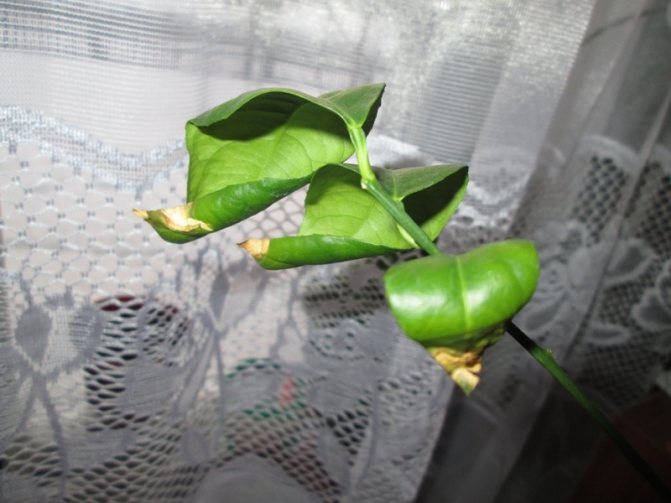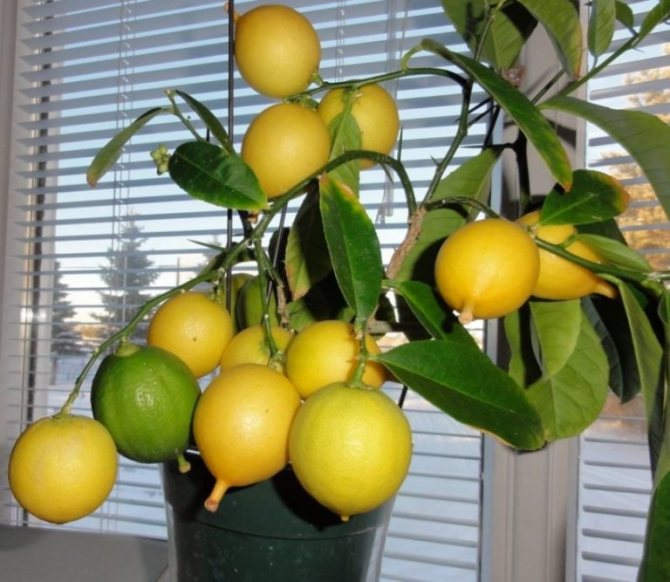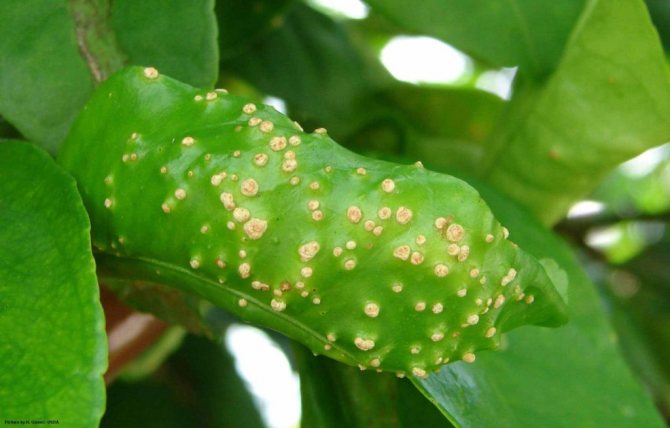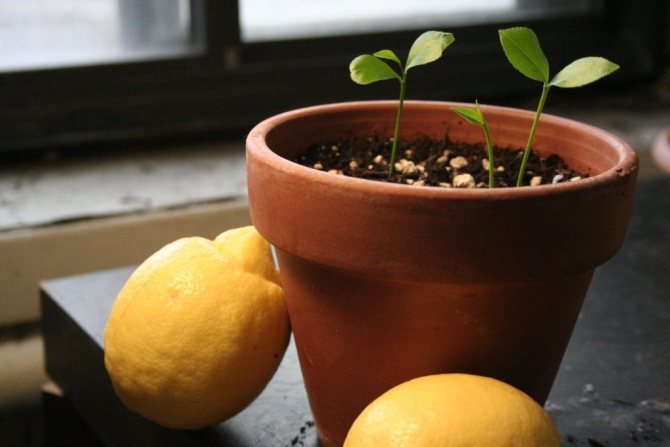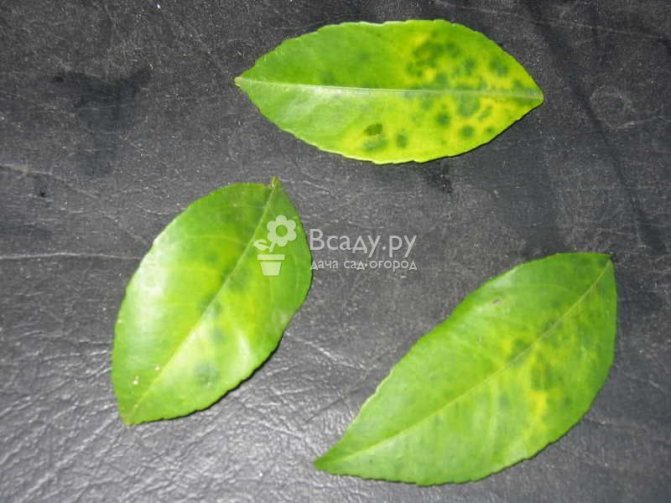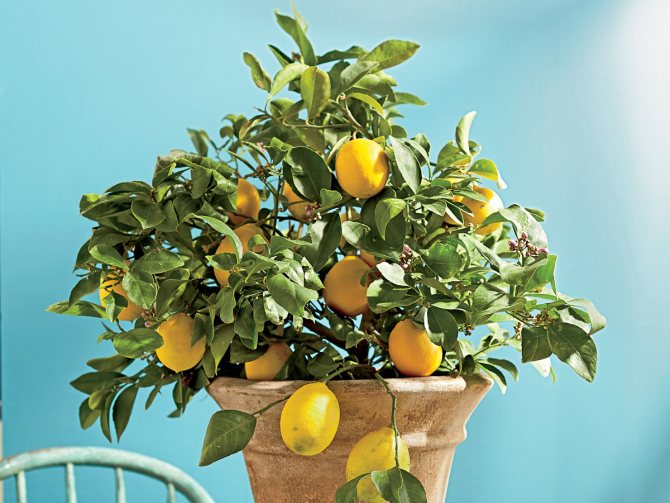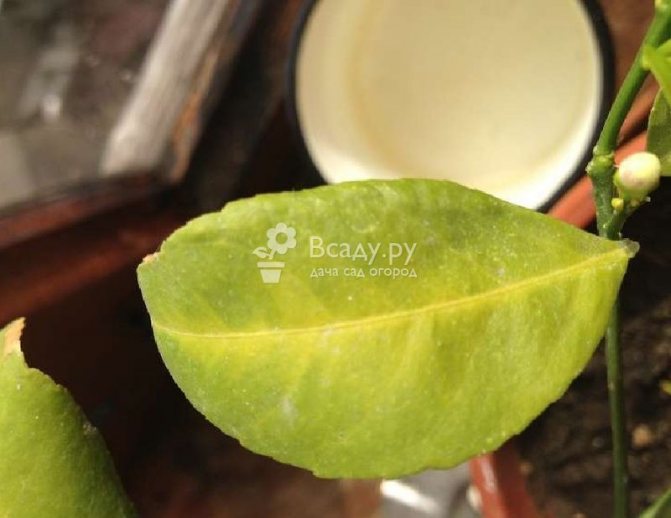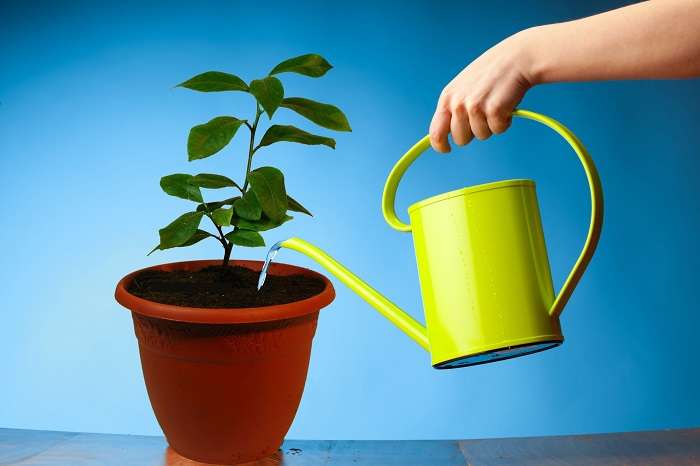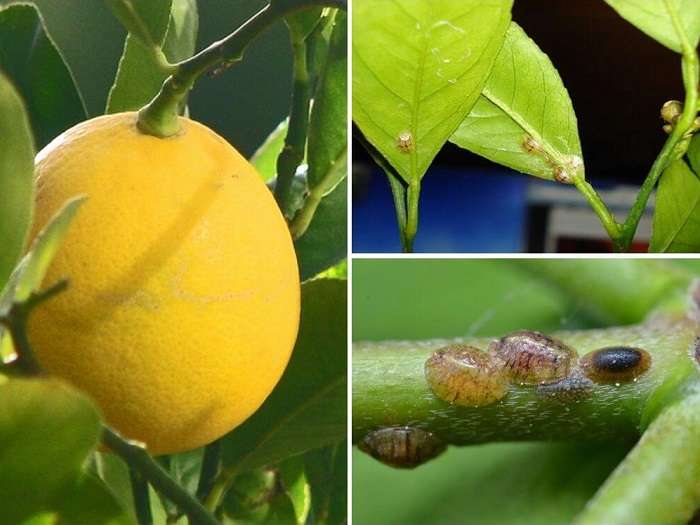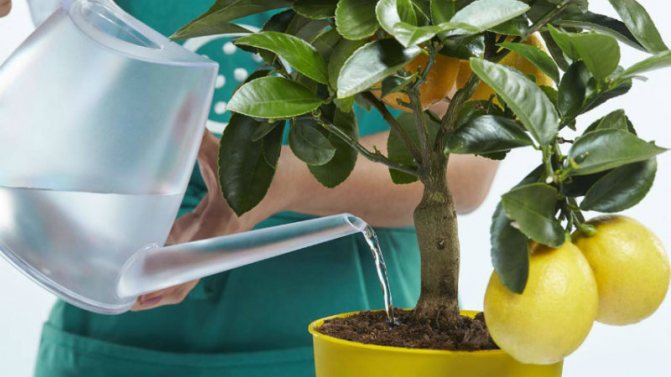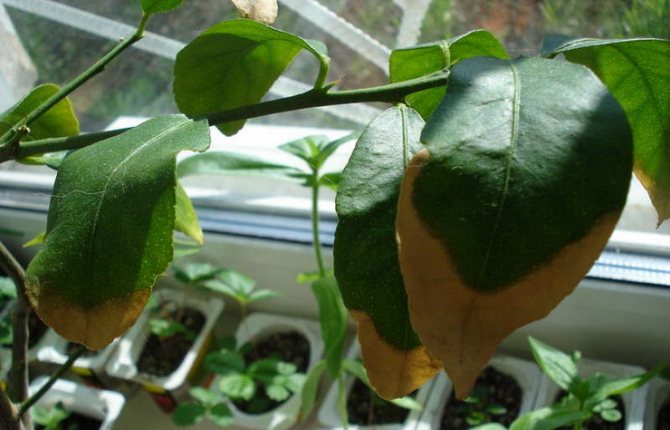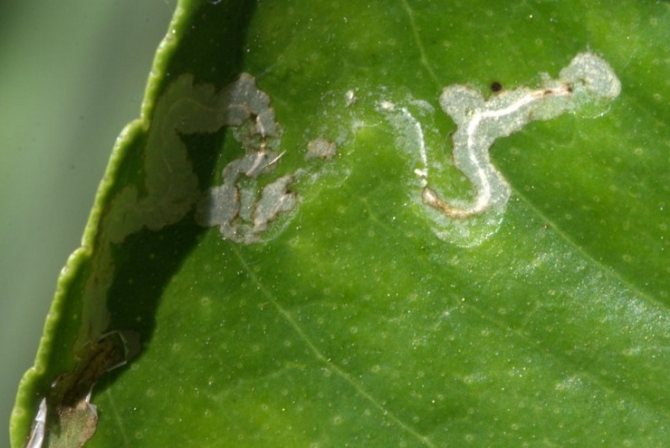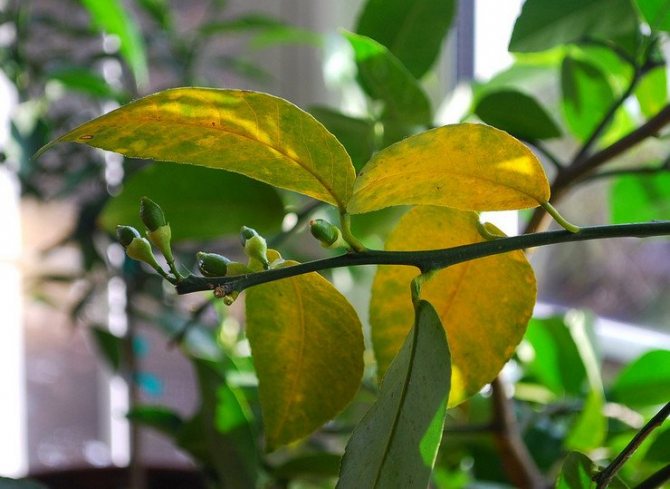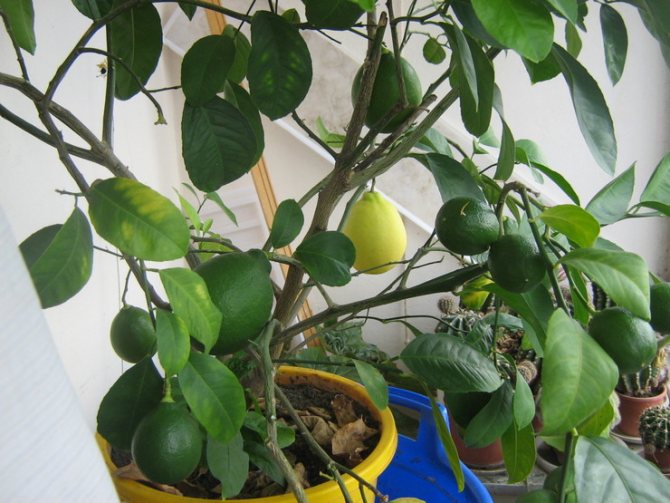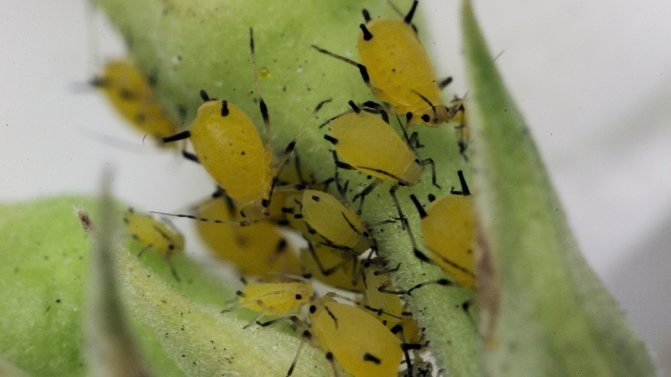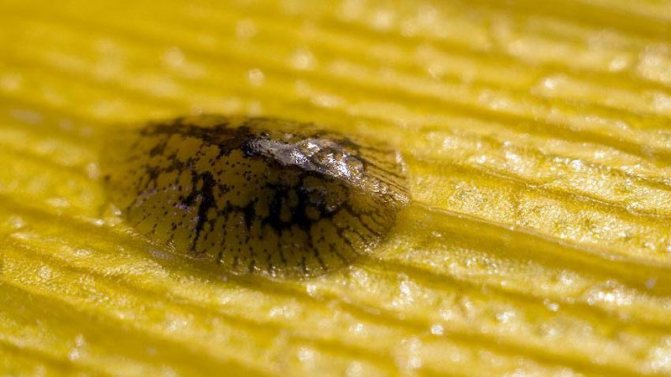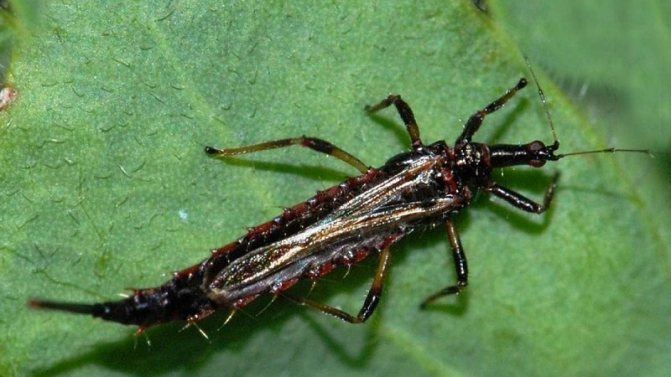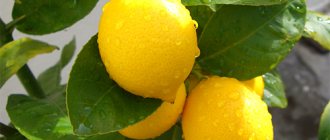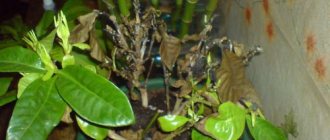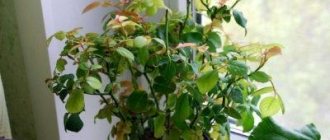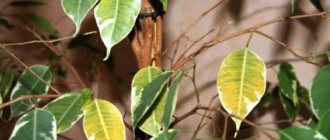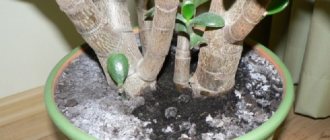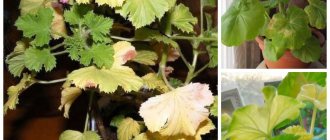One of the common problems when growing citrus fruits in an apartment is yellowing and falling of leaves, buds, ovaries, fruits. All this affects the appearance of the plants and, of course, the yield. Instead of a fragrant decoration of the apartment, the lemon turns into several twigs, the presence of life in which can only be noticed by the fact that the trunk itself is not dry. We will tell you why the leaves of indoor lemon turn yellow and how to fix the situation.
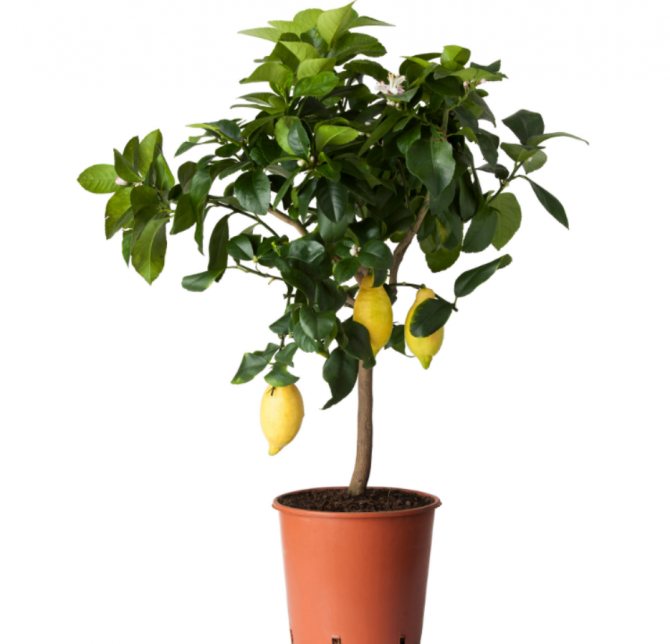
Reasons for falling ovaries and citrus fruits
If your homemade lemon sheds ovaries or even already grown fruits, this is a reason to take a closer look at the plant. Perhaps the plant is all right: it's just too young, and there are too many ovaries. Another option is to remember if you moved the pot during flowering. Even a little bit. Even with good intentions to provide the plant with more light. Citrus fruits are very sensitive to movement and minimal movement or rotation of the pot causes them to shed their ovaries.
And now a subtlety that will help distinguish the described situations from real problems. A plant that has enough in life, throwing off the ovaries, leaves leaves in place. Which at the same time have a healthy bright green color, normal size and do not have any damage. If something is wrong with the leaves, it's time to save the lemon.
Leaf damage by mites
A common reason why leaves curl is mite infestation. This is a special type of mite that is not harmful to humans, but at the same time can cause significant damage to the plant. The spider mite can be introduced during grafting or simply crawl onto the lemon from other plants.
Usually you can see such a spider mite at the bottom of the leaves. A characteristic cobweb appears on the foliage, under which you can see swarming ticks. The leaves begin to curl, and due to constant mechanical damage and a decrease in nutrition, the entire plant will invariably suffer and dry out quickly.
To get rid of spider mites, it is recommended to use actellik solution, which can be purchased at specialized garden stores. If the plant is in bloom, use of this chemical is prohibited.
A fairly effective way to remove ticks from indoor lemon is to wipe the leaves with a soft sponge soaked in warm soapy water. To prepare such a solution, you will need to dilute 50 grams of liquid soap in a liter of water. After wiping with soapy water, you need to bathe the lemon in the shower.
The spider mite is often introduced during the grafting of lemons, therefore, when performing this procedure, you should carefully examine the cuttings used. If a tick is found on the stock, it is best to refuse to carry out cuttings. This will save you a number of problems and you will be able to grow a strong and healthy lemon tree.
Why does the plant shed its leaves
Lemon is a vivid representative of semi-leafy plants. It does not shed its leaves every fall, like deciduous chestnuts and poplars, and not evergreen like conifers, rhododendrons or subtropical forest dwellers. The loss of foliage for a lemon is not a disaster, but at the same time it is the first signal that not all is well with the tree.Getting into suboptimal conditions, the plant will first shed its buds and ovaries, because if the conditions are not suitable, there is no point in multiplying, and secondly, the leaves. Why feed them when you can survive bad times and grow new ones?
Bad times, in terms of lemon, are too:
- cold or hot;
- wet or dry;
- dark or light;
- few nutrients remained in the soil;
- there are many pests on the tree.
Lemons, therefore, have many reasons to declare autumn in their tub. Our task is to understand which of them a particular plant has in mind.
Prophylaxis
The best prevention is good and proper care. It is always easier to prevent a disease than to cure it. Also, for the prevention of pathogens of viral, bacterial and fungal diseases, it is recommended to use the phytosporin boifungicide. They need to spray and water the citrus. There can be many reasons for curling lemon tree foliage, but with proper care they can be avoided.
If you find an error, please select a piece of text and press Ctrl + Enter.
Elevated temperature
If the leaves of a lemon turn yellow and fall off, and in addition, curl around the edge, it is most likely to blame for the increased temperature, most often in combination with low humidity. This problem overtakes the owners of homemade lemons with the beginning of the heating season. A temperature of 20-23 ° C can still be achieved if you put the lemon away from the battery (but in this case the plant will have little light), but you can achieve the desired humidity of 70% only by placing bowls of water near the pot or covering the batteries with wet sheets, which will have to be changed regularly ...
Lemon Infectious Diseases
Lemon leaf curling is also associated with infectious diseases. The most common diseases are black fungus and gommosis. In case of a soot fungus disease, a black mold appears on the plant, which quickly spreads and worsens the condition of the tree. The appearance of gommosis is accompanied by the cracking of the trunk and the release of vitreous resin from it.
There are several lemon tree treatment options. Usually, infectious diseases are fought with the help of special drugs that are sold in flower shops. They are bred with water and sprayed with them throughout the plant.
Fighting diseases is real and folk methods.
Improper care, exposure to pests or the appearance of diseases lead to the fact that the leaves of the homemade lemon curl. Over time, they begin to fall off, the plant loses its decorative qualities and may even die. To prevent this, it is necessary to find out the cause in time and take the necessary measures for treatment.
Excessive watering
If the lemon leaves churn from the base to the edge, dry out and fall off, this is a clear sign of waterlogging of the soil. When the earth is overflowed, the amount of oxygen in it decreases. Normally, the soil contains 10% of this important element, and the roots absorb it. If the amount of oxygen drops to 5%, the lemon will begin to choke and lose half of its leaves.
To clarify the diagnosis of chronic overflow, look for these signs:
- lemon leaves are sluggish, turn yellow, dry at the edges, brown;
- the ground is moist to the touch even the next day after watering;
- when tapped, a pot of earth makes a dull sound;
- mold is visible on the ground and tree trunk;
- the processes of wilting and falling of leaves begin from the top of the head;
- midges start in the pot.
As a rule, a tree reacts to overflow only when the roots are already significantly damaged, and young and weak plants are more prone to foliage than strong ones. Therefore, the sooner you noticed the disorder with the lemon, the more chances you have to save it.The first symptoms of root rot, and this is the name of a dangerous plant disease, which is a regular excess of moisture, appear 2-4 months after the start of damage to the root system. Therefore, when, due to too high humidity, leaf fall began, the roots are already seriously ill.
Most often, lemon sheds its leaves due to waterlogging on New Year's Eve. This is due to the fact that it is easiest to pour the plant in late summer and early autumn, when the lemon stops producing new leaves and leaves during a period of relative dormancy. At this time, he needs much less water. In addition, before the start of the heating season, temperature changes in the apartment can be significant. Consequently, the rate of evaporation of water is constantly changing, and watering as needed is not always possible.


Mineral fertilizers
A deficiency of useful elements in the soil can affect the deterioration of the lemon. The lack of certain components is determined as follows:
- Calcium: young foliage curls, fades. New ovaries of leaves fall off. However, calcium deficiency in homes is rare because tap water contains sufficient amounts of it. The element is replenished with calcium nitrate, chalk extract or lime.
- Magnesium: Lemon leaves curl and fade between the veins. In some cases, the plant takes on a bright color. Most often, the lack of an element occurs during the ripening of the fetus, rarely - during growth and development. Top dressing is performed with magnesium sulfate or other fertilizers that contain it.
- Boron: noticeably manifests itself on young shoots: they curl and seem wilted, however, after watering the situation does not change. The upper leaves on the branches curl from the edge, on some there are transparent spots or expanded veins. Top dressing with boric acid, but in compliance with strict proportions: even a slight excess of the element content can destroy the plant.
- Copper: leaves increase in size, darken, bend. With prolonged fasting, the foliage becomes smaller, curls, the edges lose their regular shape. Top dressing is performed with copper sulfate, copper sulfate.
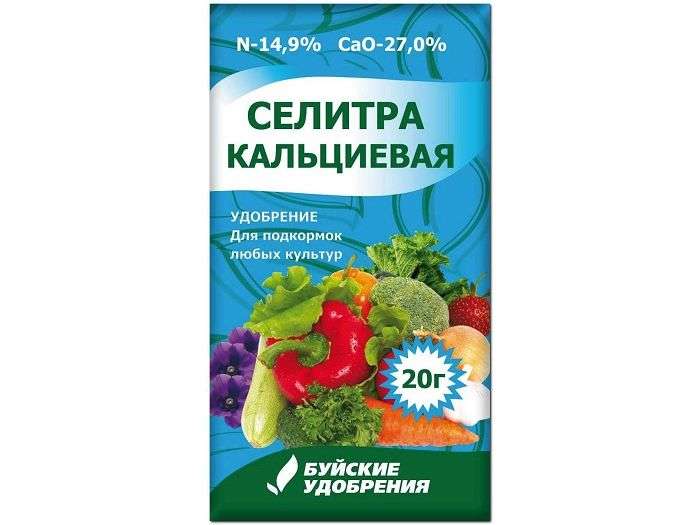







The lack of other minerals does not affect the condition of the lemon that much.
Soil depletion
Lemons are sensitive to changes in soil chemistry. They need a lot of nutrients. Therefore, caring for lemon at home, so that the plant does not fall off the leaves, necessarily includes a weekly application of fertilizers specially designed for citrus fruits. If this is not done, sooner or later the lemon leaves will fall off and the trunk will dry out.
There are diseases of domestic citrus fruits, which are caused by an excess or deficiency of certain macro- and microelements in the soil. For example, gommosis, or gum flow. With this disease, cracks appear in the bark of citrus trees, from which resin oozes. In the plant, the flow of juices is disturbed, its yield decreases (or fruiting becomes impossible in principle). The danger of this disease is also that an infection can penetrate into the cracks, which will be difficult to fight. It is one thing to remove the fungus from the surface of the bark, and quite another thing when the mold has penetrated into the plant. To prevent this, the cracks are carefully cleaned and treated with garden varnish. But dealing with the consequences is not enough to make a lemon healthy. The cause must be eliminated.
Hommosis occurs when a plant receives too much nitrogen and not enough potassium. To cure a lemon, you will need to perform two successive operations: to rid it of excess nitrogen by transplanting it with a change of soil, and to feed it with potassium phosphate fertilizers. In the future, you need to ensure that the plant receives the necessary fertilizers in a timely manner and in full, and not get carried away with the combined mixtures developed for other crops.
An excess of nitrogen with a normal content of other essential minerals leads to the appearance of too bright and juicy foliage in a lemon, but buds or even more ovaries on a tree cannot be found: in such a situation, the lemon “fattens”. If your plant, on the contrary, lacks nitrogen, the leaves will become smaller and narrower, and begin to turn yellow, moreover from the veins.
With a lack of phosphorus, old leaves acquire a bluish tint, deformed, like a sheet of paper, on which water has been spilled and dried. Then dark brown spots of dried tissue appear on the leaves. Gradually, all the leaves of the plant begin to look like this.
The lack of potassium is manifested by deformation of the leaves along the line of veins and the appearance of rusty-yellow spots on the plate.
If there is little manganese in the water (or a lot of calcium, these are related states), then the veins of the leaves will remain green, and the space between them will acquire a yellowish tint. Most often, this problem arises if you use tap water for irrigation in regions where the water is quite hard.
Iron deficiency is noticeable on young leaves: they are noticeably lighter than in healthy plants, and can even fade to white. With a lack of zinc, the leaves become smaller and turn yellow, or yellow specks appear on them, sometimes the edge of the leaf rises upward. Copper deficiency results in larger, but also noticeably paler, S-shaped leaves.
All these problems are corrected with fertilizers.
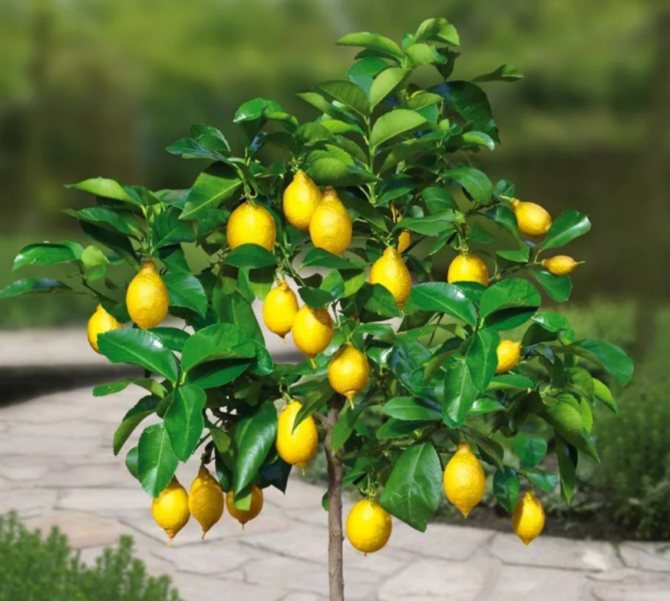

Lack of lighting
The natural habitat for lemon is the hot tropics, so genetically the plant needs good long-term lighting. But this does not mean that the tree should be exposed to direct sunlight. Otherwise, the sheets may be burned. If there is not enough light, yellow spots will appear on the lemon leaves. You need to provide the lemon with adequate lighting, especially during the cold season. Try to keep it on south-facing windows or use fluorescent lights for lighting.


Pests and diseases
Even at home, lemon can be attacked by fungi, pests and viruses. Some of them can be one of the reasons for the yellowing and falling off of lemon leaves.
Fungi
Anthracnose
Damp heat; deficiency of phosphorus and potassium.
Dark brown spot affects leaves and fruits, then the plant sheds ovaries, leaves. Whole branches dry up.
Sick parts of the plant are removed, the plant is treated with antifungal drugs 1 time in 4 days
Scab
High humidity.
Spots and growths on all aerial parts of the plant, first gray, then dark brown or green. Leads to plant death
Mobile, or sooty fungus
Pests, high humidity, lack of ventilation
Black sooty bloom on leaves and shoots interferes with photosynthesis and leaves fall off
They are treated for parasites, the fungus itself is washed off with warm water
Powdery mildew
High humidity, excess nitrogen fertilizers, no pruning.
A white, flour-like coating appears on the leaves, then covers the entire plant.
Antifungal drugs are used, the crown is thinned, potassium-phosphate fertilizers are added every 2 weeks, the lemon is moved to a lighted and ventilated place.
Pests
Shield
Leaves become sticky, turn pale and fall off. Yellow or red spots remain at the site of feeding of the scale insects.
The affected parts are cut off along with the pests, the plant is treated with soapy water, insecticides: against aphids once every 5 days, from scale insects, thrips and spider mites once every 2 weeks.
Aphid
Deformation of leaves, pests visible to the naked eye densely stick around the stems
Thrips
Small insects that resemble lizards in appearance, as they have a long tail.
Spider mite
Dry heat
The appearance of a sticky web under the leaves
Viruses
Malsecco's disease
Lack of lighting, young planting age.
The leaves are covered with yellow spots, then fall off. The tops of the shoots dry out. The wood veins turn red.
Does not exist. In order to prevent infection, quarantine and hygiene measures are carried out.
Tristeza
Aphid infestation, inoculation using an infected rootstock
The leaves turn yellow, while the veins turn white. The wood is deformed.
Viral mosaic
Pest infestation, use of contaminated soil, insufficient processing of tools
Deformation of the sheet plate in combination with the appearance of light spots
If your lemon is infected with a virus, you will have to part with it: such plant diseases are not only incurable, but can also infect other plants in your home. But all the other problems are quite solvable. True, it is much easier to prevent infection. For this you need:
- when purchasing new plants, keep them separate from the rest for 3-4 weeks;
- take soil for plant transplantation only from trusted suppliers;
- if you make soil mixtures yourself, sterilize their components by placing them in an oven preheated to 200 degrees for 10 minutes, then the soil must be treated with probiotics (beneficial bacteria) and allowed to stand for 2-3 months.
Treatment of fungal diseases should be started as early as possible. And, if such a misfortune happened to your indoor tree, this is an unambiguous sign of improper plant maintenance. There is no humidity and there is a lot of fresh air - the fungus simply has nowhere to multiply.
Preventive measures
As a rule, preventive measures in this case are called providing the lemon with the necessary living conditions for maintaining health, normal flowering and stable fruiting.
This measure allows not only to maintain the required level of moisture and cleanliness of the leaf plates, but also protects the plant from the appearance of such pests as spider mites and scale insects. It is important that the tree receives a large amount of bright but diffused light for 12 hours every day.

